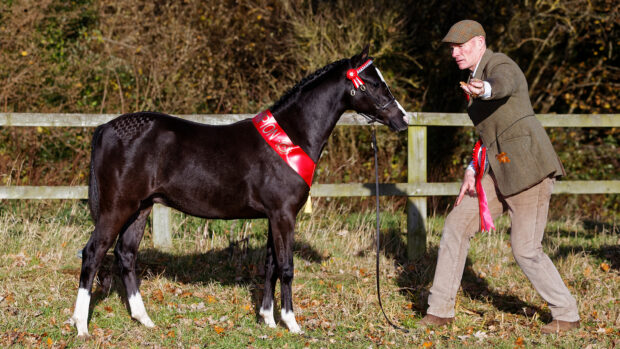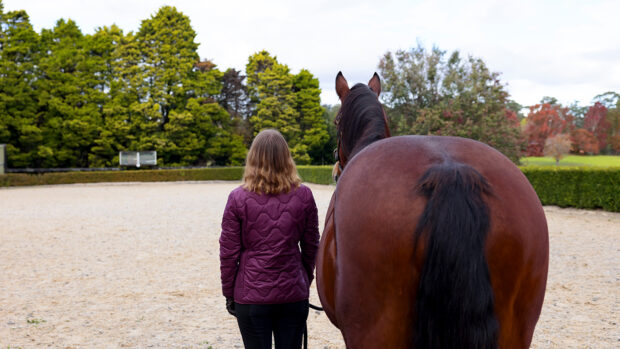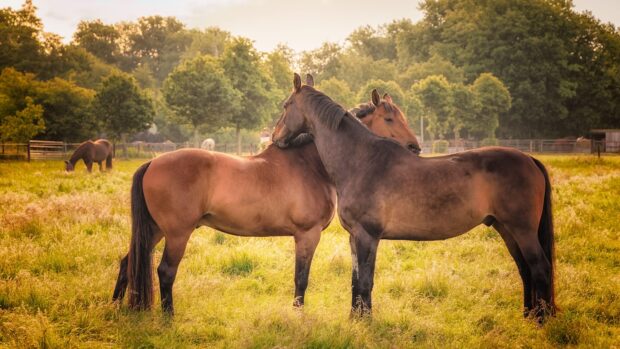Some horses become so excited at the prospect of grass, open space or joining the herd that they seem to forget you’re still at the other end of the rope. If you’ve ever been dragged to the gate or watched your horse hurtle off, his partly unbuckled headcollar flapping, you’ll know how frustrating — and potentially dangerous — this can be.
If you have the luxury of some variation, use it to your advantage, says Polly Bursby, instructor and part-owner of an 80-horse livery yard and riding school.
“Avoid turning out at the same time each day or into the same paddock. Alter the routine so the horses aren’t anticipating going out,” she says.
Polly adds that a lot depends on how the horse feels — is he hungry or craving company?
“Find out what the motivation is and adjust your behaviour accordingly,” she says.
Sean Burgess, producer and event rider, believes in bribery!
“With a difficult horse, I often take a titbit so it waits for that before you let go of it,” he says. “A chiffney doesn’t really work because horses take off with them on or in a struggle you can catch them in the teeth.”
Pam Tetley, national hunt trainer and horse transporter, is similarly wary.
“Using a chiffney is the easiest way to break a jaw,” she says. “I always use a lunge rein, wear gloves and turn the horse towards me — they’re the obvious things. Then I’ve found a type of metal cavesson I call a ‘loader’ and it’s saved my bacon lots of times.”
These are also known as studs or stallion rings and, though quite specialist, can be bought from some saddlery shops in the UK.
“It swivels to keep the nose down and the horse can’t get away from it,” explains Pam. “It’s much easier to put on than a chiffney because it’s not going in the mouth — it’s just like a headcollar — and once the horse feels it, he doesn’t give you a problem.”
A cheaper investment would be an extra long leadrope. Most ropes in the UK are just under 6ft, which leaves you right by the horse’s hindlegs if he tries to take off and means that you are probably forced to let go if he rears or shoots backwards. If you tend to get tangled up in a lunge line, buy an 8ft or 12ft rope.
If all else fails, you can attempt to avoid the problem entirely.
“Sometimes, if a horse is difficult to turn out I ride him right into the paddock, dismount and take his tack off there. He might gallop off but you haven’t got the difficulty of getting him there,” says Polly Bursby.
- This feature was first published in Horse & Hound (12 August)



